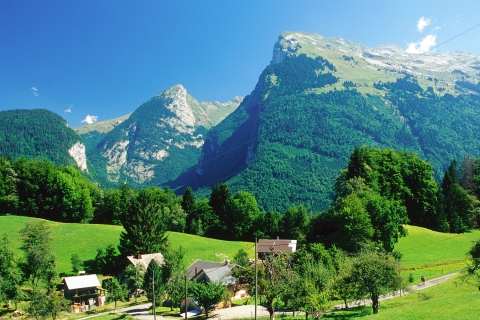Le Hohwald Rainfall & Precipitation: Monthly Averages and Year-Round Insights
This page shows the average amount of rainfall per month in Le Hohwald. The numbers are calculated over a 30-year period to provide a reliable average. Now, let’s explore all the details to give you a full picture.
Le Hohwald has a notably wet climate with abundant precipitation, recording 1219 mm of rain/snowfall per year.
Monthly Precipitation Levels
The average number of days each month with precipitation (> 0.2 mm)
Year-round, Le Hohwald has a balanced climate with minimal variation in precipitation. The difference between the wettest month, June, with 118 mm, and the driest month, April, with 86 mm, is minimal.
June, the wettest month, has a maximum daytime temperature of 23°C. The city receives 225 hours of sunshine in this period. During the driest month April you can expect a temperature of 16°C. For more detailed insights into the city’s temperatures, visit our Le Hohwald Temperature page.
Annual Precipitation in France
The map below shows the annual precipitation across France. You can also select the different months in case you are interested in a specific month.
 heavy rainfall
heavy rainfall
 high
high
 moderate
moderate
 low
low
 almost none
almost none
Amsterdam Precipitation Compared World Wide
Le Hohwald’s average annual precipitation is 1219 mm. Let’s compare this to some popular worldwide tourist destinations:
Boston, USA, experiences 1238 mm of annual precipitation, including significant snowfall during the winter.
Osaka, Japan, experiences 1507 mm of rainfall annually, spread across the year with wetter summers.
In Tokyo, Japan, the average annual precipitation is 1528 mm, with significant summer rains due to typhoon season.
Bangkok, Thailand, experiences a tropical monsoon climate with 1668 mm of annual rainfall, with the heaviest precipitation occurring during September and October.
How is Precipitation Measured?
Precipitation amounts are measured using specific gauges installed at weather stations, collecting both rain and snow and any other type of precipitation. Rainfall is measured directly in millimeters, while that from snow and ice is obtained by melting it. Automated systems often incorporate heaters to make this easier.
Information from these stations is transmitted via Wi-Fi, satellite, GPS, or telephone connections to central monitoring networks. This information is immediately updated and integrated into weather models and forecasts.
Interesting weather facts
- Mawsynram in India is noted as being the wettest place on earth, with over 11 meters of rain falling every year.
- In contrast, Antofagasta in Chile is among the driest places on the planet, getting less than 0.1mm per year, with some years recording virtually no rainfall.
- Nearly 1,650 thunderstorm cells are estimated over the planet at any given time.
For more detailed information about Le Hohwald’s weather, including sunshine hours, humidity levels, and temperature data, visit our Le Hohwald Climate page.
Current rainfall in Le Hohwald






